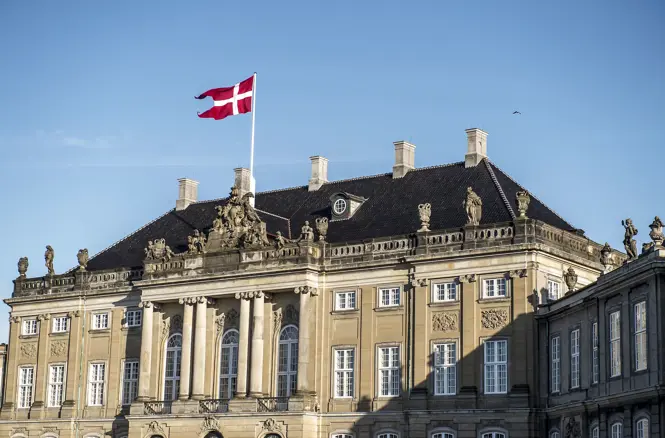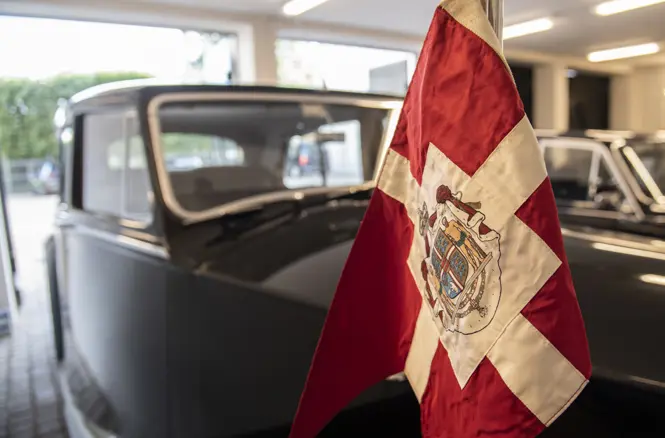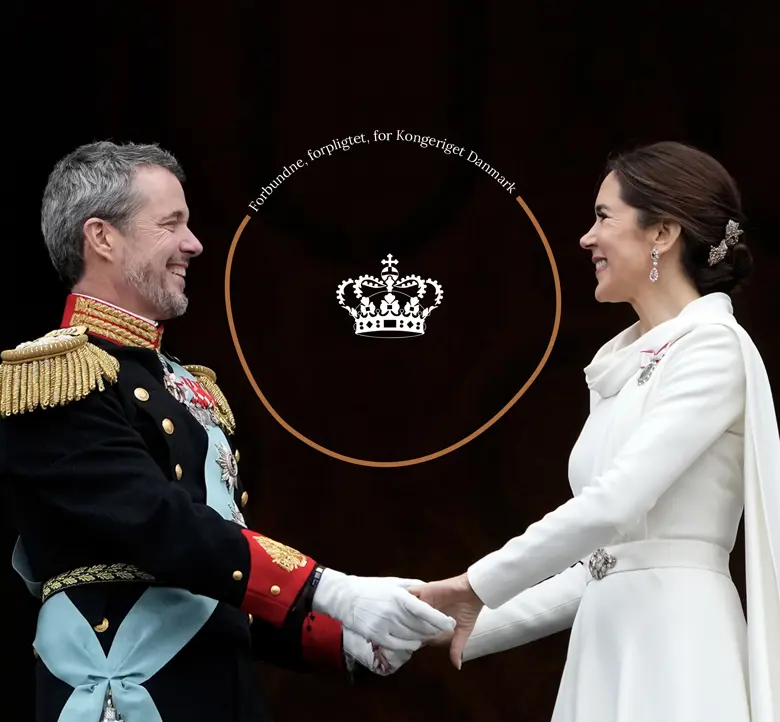The royal flags
After the proclamation of HM King Frederik X on Sunday, there will be changes in the display of flags from the Amalienborg palaces.

At HM Queen Margrethe’s residence, Christian IX’s Palace, the Royal Flag will be taken down and, instead, the Flag of the Royal House will be raised. At the same time, the Flag of the Heir to the Throne at Frederik X’s residence, Frederik VIII’s Palace, will be replaced by the Royal Flag. In this way, the transfer of the throne is marked.
The Royal House of Denmark displays a range of special Dannebrog flags in the form of swallow-tail flags with different symbols in the white middle field. When the royal flags are raised, it shows, among other things, whether members of The Royal Family are staying at a specific locality or whether an acting regent has assumed duty.
The Royal Flag, which dates back to 1731, is used by the reigning monarch. In the middle field, it has the royal coat of arms with royal crown, red pavilion and, below it, two supporting woodwoses with shields, surrounded by the chains of the Order of the Elephant and the Order of Dannebrog.
The Flag of the Heir to the Throne, which was introduced in 1914, has the crowned Danish coat of arms in the middle field, surrounded by the chain of the Order of the Elephant. This flag is used by the heir to the throne.
The Flag of the Regent, which was also introduced in 1914, has the royal regalia in the middle field: crown, sceptre, sword and orb. This flag is used by the member of The Royal Family who functions as regent in the absence of the majesty and the heir to the throne.
The Flag of the Royal House has the royal crown in the middle field and is used by the other members of the royal family.
The royal flags are also used on The Royal House of Denmark’s motor vehicles on official occasions, where they similarly indicate which members of the royal family are being transported in the vehicles.




